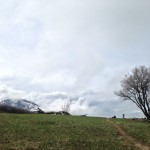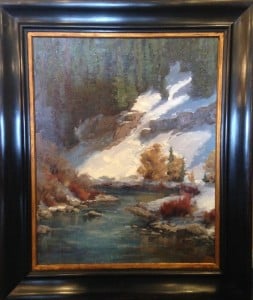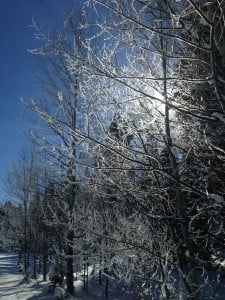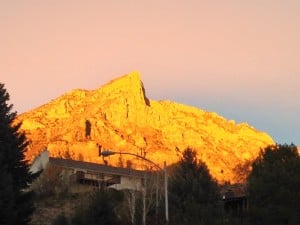It’s that time of year in Utah. People are flocking to the trailheads and heading up into the mountains for the chance to visit high mountain lakes or to stand atop a peak and look out over where we live. Hiking for recreation is a relatively modern invention. It certainly held little appeal to Mormon pioneers who spent months walking to Zion and then exhausted their bodies living by the sweat of their brow. But it almost seems that for many hiking has become a vital method for coming to their senses, literally and figuratively. Before the advent of secular recreation, mountains long held a strong grip on the religious imagination of those who lived in their shadow. Imagined to be the homes of the gods, mountains have provided food and water to those at lower elevations. They help gather rain clouds for greater precipitation, they bring streams and rivers to the valleys, and by virtue of their various microclimates, they are hosts of diverse flora and fauna. They can be formidable, even frightening, but we are drawn to them because they are also staggering in their beauty. Perhaps for these reasons, they have come to remind us of something providential.
Most of us these days hike in groups, but if you have had the privilege of hiking alone, of seeking the utter solitude of high wilderness, there is no doubt that mountains facilitate a stripping down of the self. Once I found myself not far from my home, only about an hour or so by foot, but at an elevation of some 2000 feet higher, standing in a small and enclosed meadow on a foggy morning. A wind was blowing in bursts, rolling blankets of fog up and over a tree line that stood before me and then splaying the fog down across the meadow where I stood in a pulsing rhythm. I faced the fog as it blew across the meadow and pretended to let it blow right through me. I extended my arms out, as if hoping that the gusts might take me up. I don’t know why, but experiences like this cause tears of joy. I feel utter insignificance and yet at the same time a personalized embrace of love in the midst of such nothingness, and this seems to then allow a brief touch of the hem of life. It is embarrassing to talk like this, but the truth is that I cannot count how many times I have felt this intimacy and peace on a mountain, those close reassurances that I am known in my nothingness. Hiking with companions is also a privilege, of course, because something about the rhythm, the high mountain air, and the sound of mountain water lightens any mood and loosens the mind and the tongue. These are bonding conversations because they tend to come from the depths of honesty. And so it is no accident that in the biblical tradition, at least, mountains are spiritual refuges that require the deprivations of fasting and of retreat from the comforts of civilization, sites of encounters with the face of God or at least His writing finger, places of transfiguration, the home of the burning bush.
But there is a different kind of burning bush these days. In the last week alone several fires have erupted on mountains throughout Utah and thrown mushroom clouds of smoke into the air like volcanoes. This is a hot and scorched earth we live on, suffering from drought exacerbated by climate change. Of course, fires are not entirely unnatural and they are their own kind of renewal, releasing seed pods and energies in the soils to make the landscape anew. And skeptics like to get worked up about the scientific impossibility of linking any particular weather event, in its singularity, to human-caused climate change, even though climate science openly accounts for this impossibility. The difficulty of linking single events to human causes does not prevent us from seeing change in patterns and to link the range of those changes to increased level of carbon in the atmosphere for which we are directly responsible. This is well explained here by an analogy of how steroids are linked to increased home runs in an otherwise naturally gifted player. So we are merely distracting ourselves from our responsibilities. We know we are putting carbon into the atmosphere, we know this is creating climate instability, and we can see, feel, and smell symptoms that are consistent with what we would expect with a changing climate. In fact, such symptoms were identified as present dangers particularly in the American West by climate models at least twenty years ago. We didn’t seem too concerned then. Are we any more concerned now? If some deprivation, some sacrifice was once necessary to prepare the soul for deeper sanctification, I wonder what we are willing to give up today to cool the hot earth, restore the mountains, and rekindle the fires of the soul.












